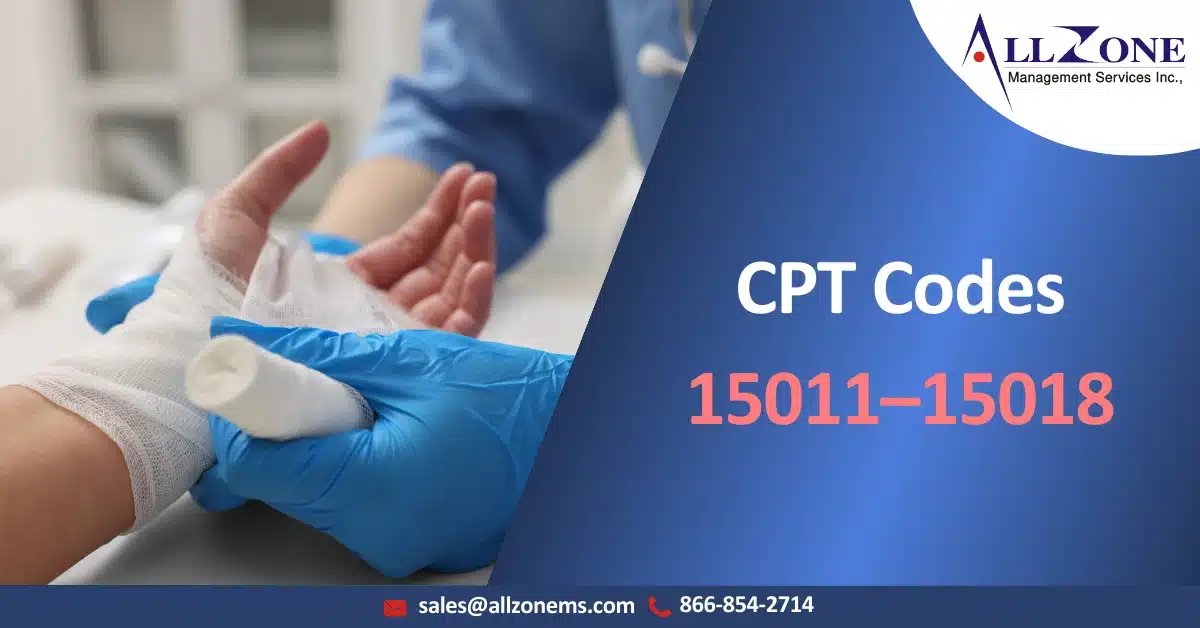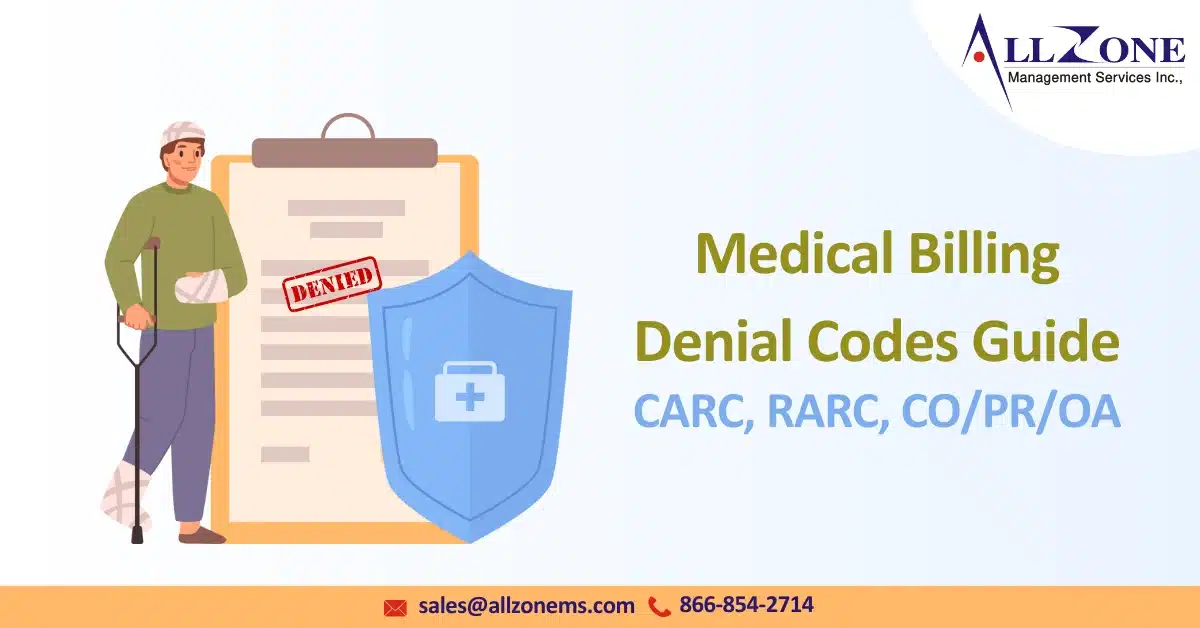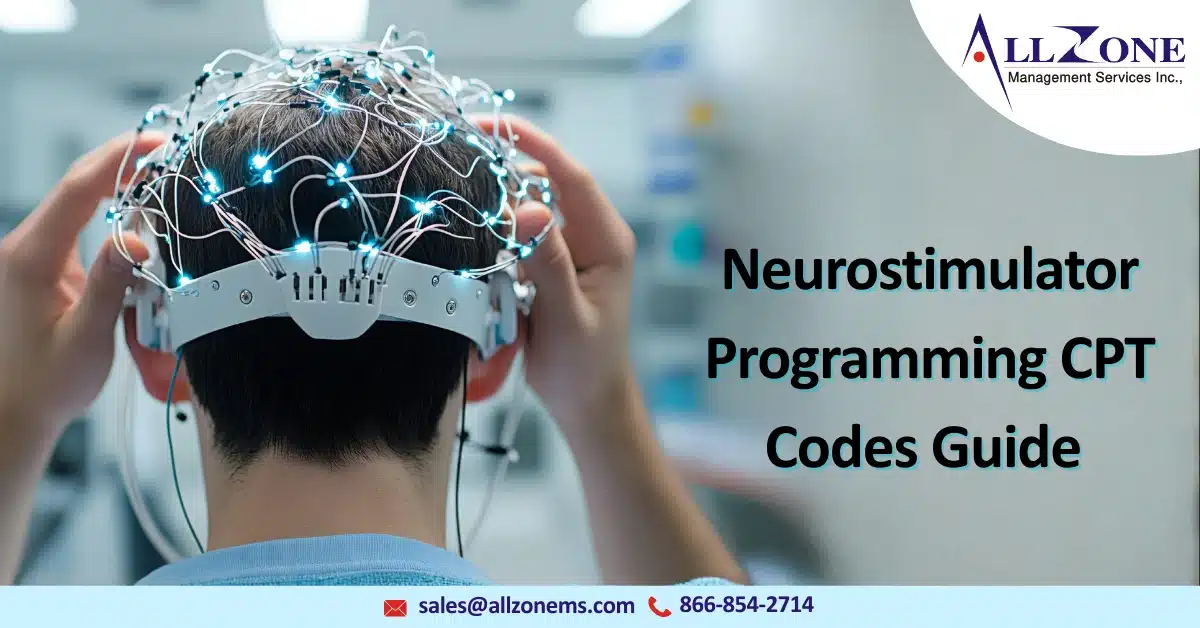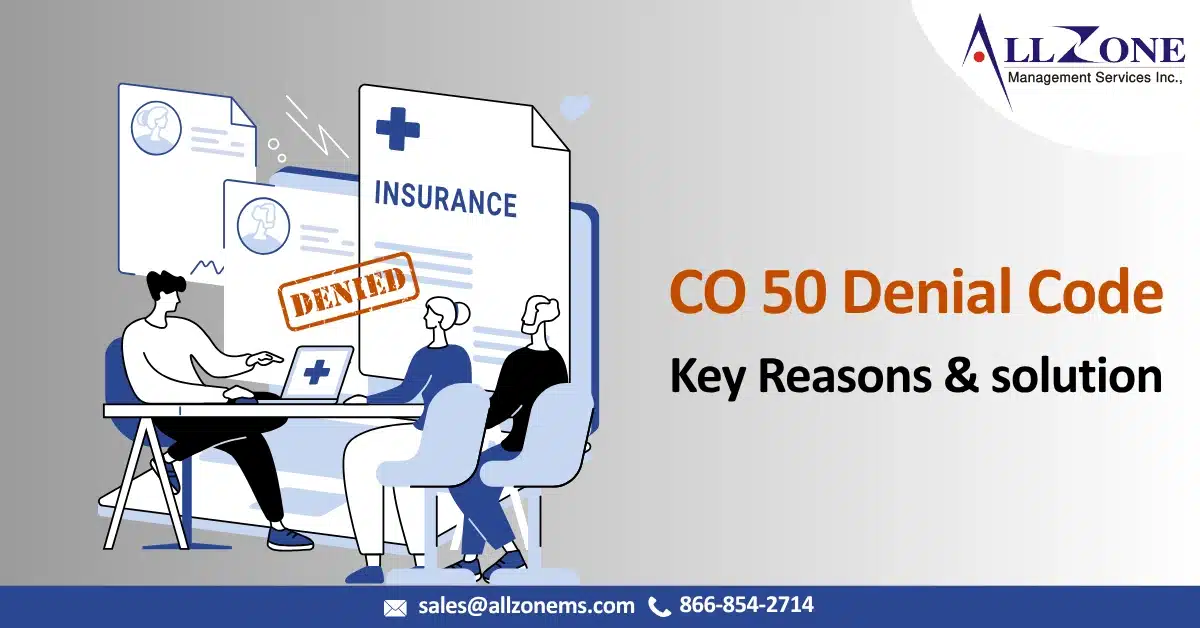Hypothyroidism is one of the most common endocrine disorders affecting millions of individuals worldwide. From clinical presentation to diagnosis and long-term management, accurate documentation and coding are essential for proper reimbursement and continuity of care. The ICD-10-CM code E03 series captures different forms of hypothyroidism—allowing healthcare providers, coders, and billers to ensure compliant, error-free claim […]
Skin grafting and surgical wound preparation are complex clinical procedures that require precise documentation and accurate coding to ensure correct reimbursement. CPT codes 15011–15018 are specifically designed to report surgical preparation or creation of recipient sites for skin grafts, flaps, or other reconstructive procedures. These codes often cause confusion for medical coders and billers due […]
Claim denials are more than an administrative headache — they’re lost revenue, wasted staff time, and sometimes broken patient relationships. Understanding medical billing denial codes (CARC, RARC, CO/PR/OA) is the first step to reducing denials and improving your practice’s financial health. This guide walks you through the most common denial codes, why they happen, how […]
Orthotic and prosthetic (O&P) services play a crucial role in improving patients’ mobility, supporting musculoskeletal alignment, and restoring physical function after trauma, surgery, or chronic conditions. To ensure accurate reimbursement for these medical devices, healthcare providers rely on the HCPCS Level II L Codes, which specifically describe orthotic and prosthetic procedures, supplies, and related components. […]
The ICD-10-CM code block B00–B09 covers viral infections that present with characteristic skin and mucous membrane lesions, including herpes viral infections, varicella (chickenpox), zoster (shingles), viral warts, and other viral diseases. These conditions are common in outpatient, dermatology, pediatrics, family medicine, and infectious disease practices—and require accurate code selection to ensure proper documentation, billing, and […]
Neurostimulation therapy has rapidly evolved into a powerful treatment option for chronic pain, movement disorders, epilepsy, and other neurological conditions. As this technology becomes more advanced, the billing and coding processes surrounding neurostimulator implantation, analysis, and programming have also grown increasingly complex. For healthcare organizations, pain management specialists, neurologists, and RCM teams, understanding neurostimulator programming […]
In the complex world of medical billing and insurance reimbursements, denial codes play a critical role in identifying why a claim was not processed or paid by the payer. Among the most frequently encountered denial messages, CO 50 – Non-Covered Services is one that often disrupts cash flow, delays reimbursement, and increases rework for billing […]
In the complex world of medical billing, HCPCS codes play a critical role in ensuring that healthcare providers are reimbursed correctly for the services they deliver. Among these, HCPCS P Codes are less frequently discussed but are incredibly important for laboratories, pathology services, and healthcare organizations that depend on precise coding for accurate payment. As […]
Intestinal infectious diseases remain one of the most commonly reported medical conditions worldwide, leading to millions of outpatient visits and significant healthcare spending each year. In the ICD-10-CM code range A00–A09, these conditions include cholera, typhoid fever, shigellosis, foodborne illnesses, viral gastroenteritis, and other bacterial, viral, and parasitic infections affecting the digestive tract. Accurate coding […]
Introduction: Accurate coding plays a critical role in ensuring timely and proper reimbursement for cardiology services. One of the most frequently used codes in cardiac rehabilitation billing is CPT Code 93798. This code represents physician-supervised exercise therapy for patients recovering from cardiac events, such as myocardial infarction, coronary bypass surgery, or heart transplantation. In this […]










